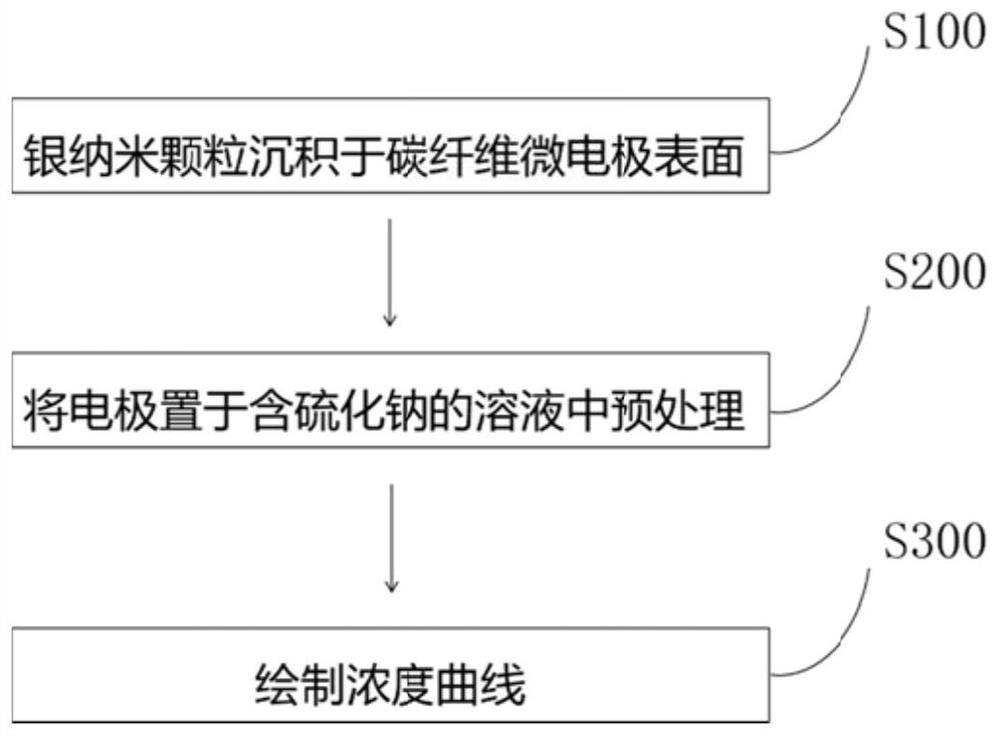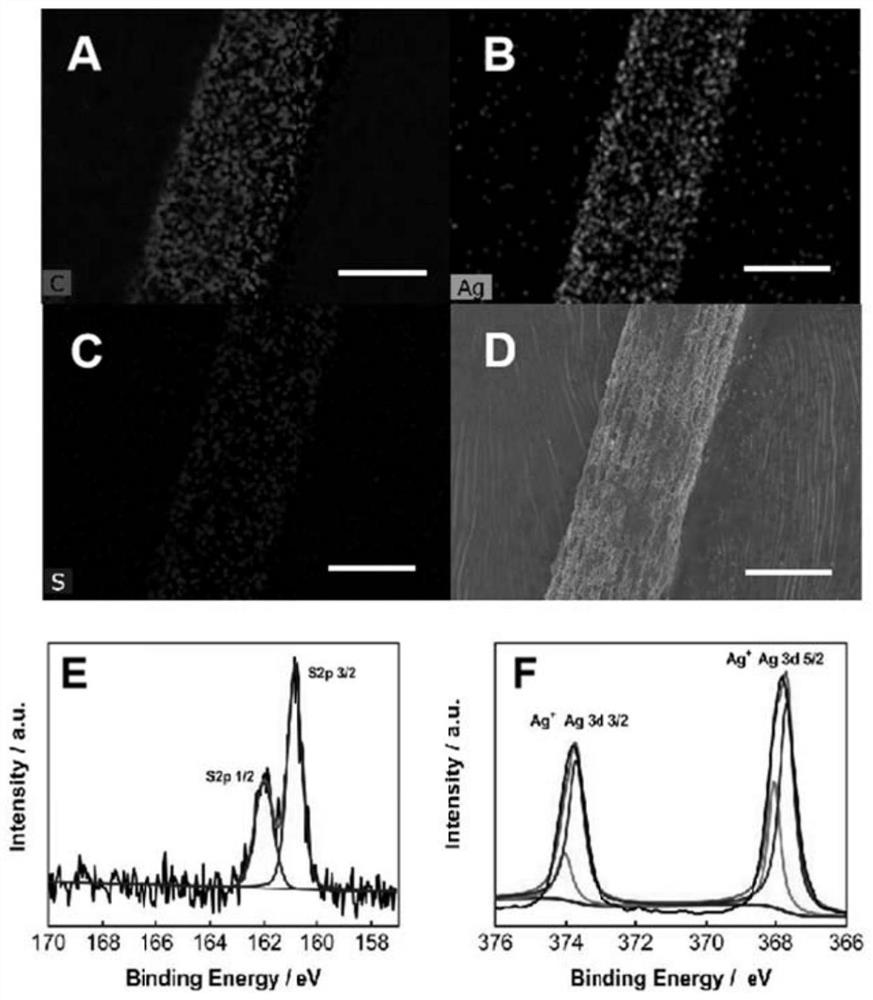Electrochemical method for high-selectivity detection of hydrogen sulfide in living body by using nano-silver carbon fiber microelectrode pretreated by sodium sulfide
A carbon fiber and microelectrode technology, applied in the field of analysis, can solve the problems of interference hydrogen sulfide existence form, difficult detection, interference, etc., and achieve the effect of avoiding oxidative stress reaction of the body
- Summary
- Abstract
- Description
- Claims
- Application Information
AI Technical Summary
Problems solved by technology
Method used
Image
Examples
preparation example Construction
[0050] In the first aspect of the present invention, the present invention proposes a method for pretreating carbon fiber microelectrodes with sodium sulfide. In vitro performance testing of this electrode was performed in advance prior to in vivo analysis. Preparation method reference figure 1 , the method includes:
[0051] S100: Ag nanoparticles deposited on the surface of carbon fiber microelectrodes
[0052] The carbon fiber microelectrodes were placed in a solution containing 1 mmol / L KNO 3 and 0.25mmol / L AgNO 3 In the mixed electrolyte of , silver nanoparticles were modified on the surface of the carbon fiber microelectrode by electrodeposition, and the electrodeposition used potentiostatic deposition, the condition was -0.2V, and the deposition time was 200s.
[0053] The above-mentioned electrodeposition may be carried out in a two-electrode system or a three-electrode system. In the two-electrode system, the working electrode is the carbon fiber microelectrode, ...
Embodiment 1
[0063] A carbon fiber microelectrode was used as the detection electrode.
[0064] Preparation of carbon fiber electrodes: First, a glass capillary (outer diameter: 1.5 mm; inner diameter: 0.89 mm; length: 10 cm) was drawn on a microelectrode drawing instrument (WD-1 type, Chengdu Instrument Factory) into two very thin tips For the conical capillary, under the microscope, lightly cut the tip with a glass knife so that the inner diameter of the port is about 30-50 μm. Then, about 2 cm long carbon fiber was glued to a copper wire with silver conductive glue, and it was threaded into the drawn capillary, so that the carbon fiber was exposed to a length of about 200-500 μm outside the tip of the capillary. Seal both ends of the capillary with insulating glue to fix the copper wire and the capillary together, and under the microscope, use a knife to cut the part of the carbon fiber protruding from the capillary to 200-500 μm to make a carbon fiber microelectrode.
[0065] The prep...
Embodiment 2
[0073] Nano-silver carbon fiber microelectrodes pretreated with sodium sulfide for highly selective detection of hydrogen sulfide in the living nervous system
[0074] To implant microelectrodes into the hippocampus of anesthetized rats, we injected S 2- 100 μM artificial cerebrospinal fluid, such as Figure 5 As shown by the blue star, a drop in potential can be observed after 300 s, injected with 200 μM Cu 2+ artificial cerebrospinal fluid ( Figure 5 Black star), the potential almost recovered to the starting baseline, proving that hydrogen sulfide can be detected by the electrode through the circulation of body fluids, and with Cu 2+ Hydrogen sulfide was consumed to aid our results. The above results indicate that the microelectrodes can track the changes of hydrogen sulfide in vivo and the physiological and pathological processes related to hydrogen sulfide in vivo.
PUM
 Login to View More
Login to View More Abstract
Description
Claims
Application Information
 Login to View More
Login to View More - R&D
- Intellectual Property
- Life Sciences
- Materials
- Tech Scout
- Unparalleled Data Quality
- Higher Quality Content
- 60% Fewer Hallucinations
Browse by: Latest US Patents, China's latest patents, Technical Efficacy Thesaurus, Application Domain, Technology Topic, Popular Technical Reports.
© 2025 PatSnap. All rights reserved.Legal|Privacy policy|Modern Slavery Act Transparency Statement|Sitemap|About US| Contact US: help@patsnap.com



